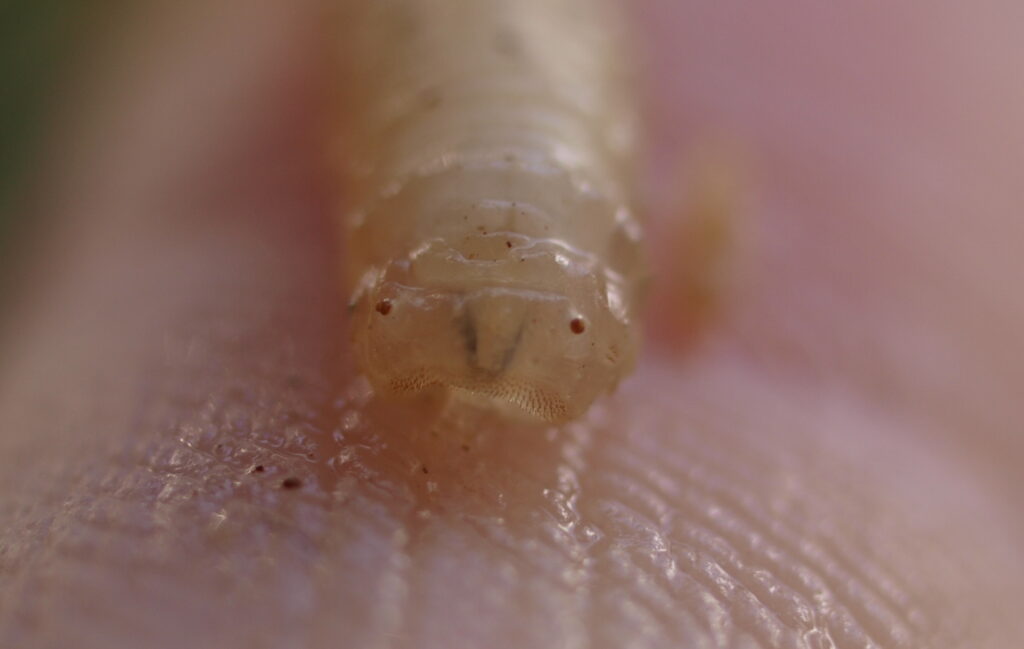My experience attempting to boost populations of the Pine hoverfly, Blera fallax, is what inspired the Hoverfly Lagoons project. The Pine hoverfly develops in rot holes in Caledonian pine stumps and roots, and shares its habitat with other species of hoverfly. While the larvae develops very well in captivity, the females are very particular and during my time on the project, wouldn’t lay eggs in the ‘Lagoons’ I created in the field. However, they readily oviposit eggs in holes drilled into pine stumps.
The Pine hoverfly is currently struggling to survive in Scotland. After the Malloch Society’s work under the SNH Species Action Framework, efforts continue to monitor the population, create breeding and foraging habitat, and captive breed it. This page is designed to inform and aid surveyors in identifying the different stages of this species.




The main larval stage character that identifies the pine hoverfly is the moustache-like anterior spicules, seen above.
Wild female searching breeding site (pine stump) in Scotland, 2008.
The pupae can be identified by the size (compared to larger species), breathing tube (presence), and colour. The pupal case tends to be a lighter colour than other species, and transparent, allowing you to see the adult development inside.





OTHER SPECIES that surveyors may come across





